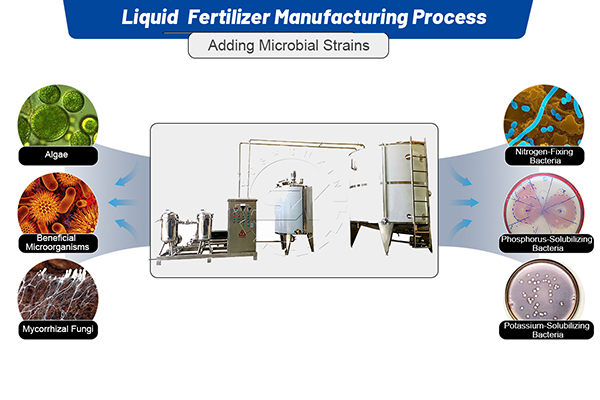Creating commercial liquid fertilizer from organic manure involves transforming raw organic materials into a nutrient-rich solution suitable for large-scale agricultural use. This process requires careful management of organic inputs, fermentation, and extraction to ensure the final product is effective and environmentally friendly. Below is a detailed guide on how to make organic liquid fertilizer?
Understanding the Basics
Organic liquid fertilizers derive nutrients from natural sources, mainly animal manure and plant residues. These fertilizers not only supply essential nutrients like nitrogen, phosphorus, and potassium but also enhance soil health by promoting microbial activity and improving soil structure.
Selection of Raw Materials
In general, liquid fertilizer making material contains the following 3 types.
- Animal Manure: Common sources include cow, poultry, and sheep manure. The type of manure selected can affect the nutrient balance of the final product.
- Plant Residues: Crop residues, compost, and other plant-based materials can enhance the organic content and nutrient diversity.
- Additives: Additional organic materials such as bone meal, fish emulsion, and seaweed may be included to boost nutrient levels.
Processing and Fermentation
The necessary process is liquid fertilizer fermentation. For this, you need to do as follows.
- Collection and Preparation: Collect and pile the manure and plant residues. It’s essential to maintain a proper carbon-to-nitrogen ratio (ideally 25:1 to 30:1) to facilitate efficient microbial breakdown.
- Aerobic Fermentation: The mixture is subjected to aerobic fermentation, which involves regularly turning the pile to introduce oxygen. This process helps in breaking down organic matter and stabilizing nutrients.
- 3.Anaerobic Fermentation (Optional): Some producers use anaerobic fermentation of liquid fertilizer in sealed containers, which can enhance nutrient extraction and reduce pathogens. This involves fermenting the mixture for several weeks to months, depending on the desired nutrient profile. Click here to learn more.
Extraction and Filtration
- Liquid Extraction: After fermentation, the liquid portion is extracted. This can be done by pressing the fermented mass or using water to leach out the nutrients.
- Filtration: The extracted liquid is filtered to remove solid particles, ensuring the final product can be easily applied with standard agricultural equipment without clogging.
Quality Control and Enhancement
- Nutrient Testing: The nutrient content, particularly the levels of NPK, is analyzed to ensure consistency and effectiveness.
- pH Adjustment: If necessary, the pH of the solution is adjusted to make it suitable for different types of crops and soil conditions.
- Packaging: The final product is packaged in containers that protect it from sunlight and contamination, often with clear labeling for usage instructions.
Environmental and Safety Considerations
Producing organic liquid fertilizers is environmentally friendly, as it recycles waste materials and reduces reliance on chemical fertilizers. However, it’s crucial to manage odor and runoff during production to minimize environmental impact.
Conclusion
Producing commercial liquid fertilizer from organic manure is an efficient way to harness natural resources for sustainable agriculture. It not only provides essential nutrients to crops but also contributes to long-term soil health. By employing precise fermentation and extraction techniques, producers can create a high-quality product that meets the needs of modern farmers while adhering to environmental stewardship principles. If you plan to start the organic liquid fertilizer making, you can visit https://fertilizerequipmentmanufacturer.com/liquid-fertilizer-production-line/ for details reference.;
